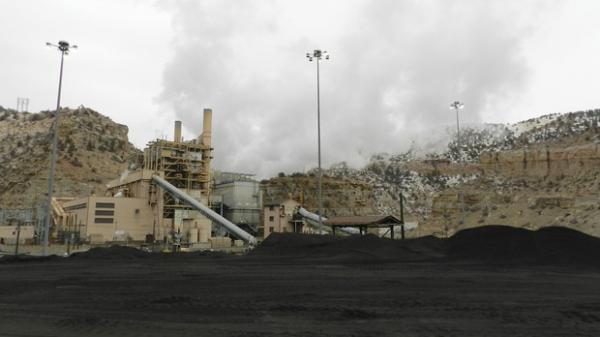On Thursday, PacifiCorp released a 20-year power plan that cuts back on coal and adds renewable wind and solar energy.
The Portland-based utility serves 1.9 million customers across six western states, including Oregon, Washington and Idaho, and right now more than half of its power comes from coal.
Environmental groups have been pressing PacifiCorp for years to close more of its coal plants sooner and speed up its transition to renewable energy. But leaders in states like Wyoming, where the utility’s coal plants are stationed, say the company would be hurting local economies and betraying their trust by closing coal plants early.
The investor-owned utility is planning to shutter more than 75% of its coal fleet by 2038, cutting nearly 4,500 megawatts of coal-fired power at multiple plants in Wyoming, Montana, Colorado, Idaho and Utah.
Only a portion of the closures would come sooner under the new plan than they would have otherwise. The company is calling for the early retirement of seven coal units at five different plants, with some closures coming more than a decade ahead of schedule.
In a statement, Chad Teply, PacifiCorp’s senior vice president for business policy and development, said the company is aware that the early retirements will cut jobs at its coal plants.
“We are mindful that these resource decisions impact our thermal operations employees, their families and communities,” he said. “Our top priority is making certain our employees and communities remain informed about the changes ahead and that we work in concert with everyone involved to develop plans that help them transition through this time of change.”
Company officials estimated the new plan will save $300 million to $500 million in operation costs and will offer the lowest power rate option for PacifiCorp customers.
Rick Link, PacifiCorp’s vice president of resource planning and acquisitions, said cost calculations played a big role in the company’s decision to reduce its generation of coal-fired power.
“Coal generation has been an important resource in our portfolio, allowing us to deliver reliable energy to our customers, and will continue to play an important role as units approach retirement dates,” he said in a statement. “At the same time, this plan reflects the ongoing cost pressure on coal as wind generation, solar generation and storage have emerged as low-cost resource options for our customers.”
On a press call following PacifiCorp’s announcement, Link said the company’s analysis shows closing too many coal plants too soon could create problems for the reliability of the grid and the capacity of the entire system to generate enough energy for all of its customers.
At the request of the Oregon Public Utilities Commission, PacifiCorp analyzed the costs of continuing to run its coal plants compared with alternative energy options. That study found more than half of its existing coal plants were more expensive to operate than other energy sources.
In 2016, Oregon lawmakers passed a bill that requires the state to stop paying for coal-fired power by 2030 in an effort to cut ties with coal plants delivering power to Oregon from out of state through PacifiCorp and Portland General Electric. Washington passed a similar law this year that will cut off payments for coal-fired power by 2025.
PacifiCorp said in an email its plan would nearly triple the company’s use of wind power. Its long-term plan calls for adding 3,500 megawatts of wind power in Wyoming and Idaho, as well as 6,300 megawatts of solar power with 2,800 megawatts of battery storage to go along with it in Utah, Wyoming, Oregon and Washington. The company also plans to build a 400-mile transmission line between Wyoming and Utah to help connect new sources of renewable energy.
The utility’s plan will need approvals from utility regulators in the six states it serves.
Christopher Thomas with the Sierra Club said the Oregon PUC should consider rejecting the company’s plan and requiring more early coal plant retirements.
“This draft plan shows what we’ve long suspected: Coal is now one of the most expensive ways to make electricity,” he said. “While Pacific Power is moving to retire some of its uneconomic coal units, it still plans to send coal power to Oregon for the next decade even though its own analysis shows that cleaner options like wind, solar and energy storage are cheaper.”
Copyright 2019 Oregon Public Broadcasting. To see more, visit opb.org

















